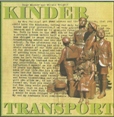 |
 |
|
 |
||||||
  Bottom Bottom |
JEWISH FACTOID |
 |
||||
| Information tidbits of interest to our community about our culture and religion Why Do Some People Leave the Synagogue During Yizkor?Although there is no requirement that one leave the synagogue if he or she is not required to recite Yizkor, many people believe it would temp fate to be present. Others feel it might be distracting to those who are required to recite Yizkor. Those reciting Yizkor might feel envious or uncomfortable to see worshippers sit in silence while they stand, express grief, and perhaps shed a tear. What is Maot Chittim, and why is it collected before Passover? Maot Chittim means "money for wheat." Since on Passover Jews may not eat bread or products that ferment, a special fund is established to assist the poor in purchasing necessities such as the wheat needed to bake matzohs. The custom of donating money to the moat chittim fund is an ancient one, governed by the talmudic rule that "those who have enough give, and those who don't have enough take." Why is the wedding ceremony held under a chupa? The origin of the chupa has been explained in a variety of ways. Some believe it is a vestige of the ancient tent-life of Israel. It has been pointed out that even to this day Bedouin tribes construct a special tent for the bride and groom. Some scholars regard the chupa as symbolic of the laurel wreath worn by the bride and groom during the marriage ceremony in Talmudic times. The original meaning of the word chupa, is "to cover with garlands." Other authorities believe the chupa is a reminder of the room in the groom's house to which the bride was brought at the end of the betrothal (engagement) period and where the couple cohabitated, thus consummating the marriage. This aspect of the ceremony, called yichud, was considered to be of the essence. During the Middle Ages, when marriages were performed in the synagogue, it became customary to erect the type of chupa still in use today. Why is a Ninth Candle Used to Light the Chanukah Menorah? The ninth candle on the Chanukah menorah is called the Shamash. Using it to light the other candles is a continuation of the practice followed when the seven-branched candelabrum of the Tabernacle and Temple was lit. The seventh branch in each of these menorot was called the Shamash, meaning "servant." Used to light the others, it was not counted as one of the lights. A ninth candle is also used because the eight primary candles of the Chanukah menorah may not be used for practical purposes. By having a ninth candle to light the others, one will not be tempted to use any of the eight primary candles for such purposes.
|
||||||
|
Subscribe (free) to the Gantseh Megillah. The Gantseh Megillah and GantsehMegillah.com are designed and hosted by HannaVisioN











 Print
this page
Print
this page